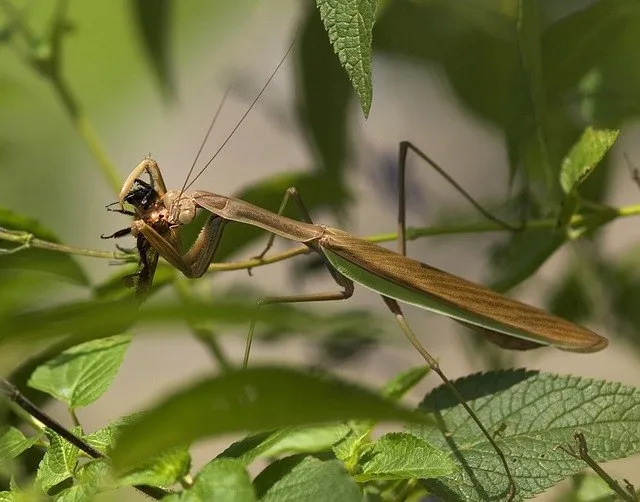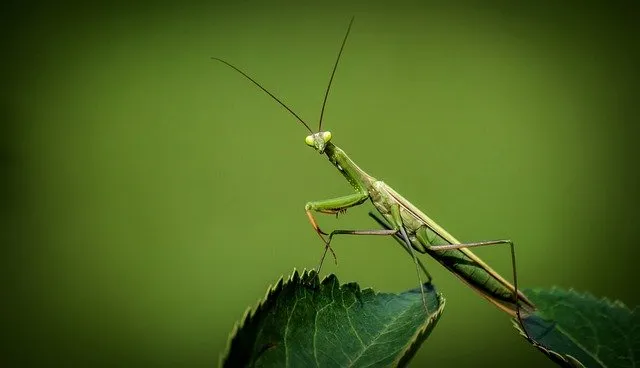As an Amazon Associate I earn from qualifying purchases.
In the enchanting world of insects, few creatures captivate our imagination quite like the mantis. With their mesmerizing appearance, graceful movements, and predatory prowess, these remarkable insects hold a special place in nature’s marvels. But have you ever wondered what do mantis eat? Join me on a thrilling journey as we unveil the secrets of the mantis diet and delve into the astonishing array of foods that satiate their voracious appetites. From tiny insects to daring meals with a sting, the dining habits of mantises are as intriguing as the creatures themselves. So, prepare to be awestruck as we unravel the culinary world of the mantis and discover the astonishing diversity of their gastronomic adventures.
What Does Mantis Eat?
The mantis is a fascinating and enigmatic creature in the world of insects. Known for their unique appearance and remarkable hunting abilities, these masters of camouflage and stealth strike fear into the hearts of their prey. But have you ever wondered what fuels the insatiable hunger of these fascinating creatures? Let’s explore the wide range of foods these agile hunters consume.
1. Insects – The Staple Diet:
When it comes to their primary food source, mantises are true insectivores. They have a voracious appetite for a variety of insect species. From flies and mosquitoes to moths and beetles, mantises are known to devour them with lightning-fast precision. Their strong forelimbs, equipped with sharp spines and serrated edges, are perfectly designed for gripping and tearing their prey apart.
2. Crickets – A Delicacy for Mantis Palates:
Crickets, with their soft bodies and high protein content, are like delicacies for mantises. Not only are they a readily available food source, but their hopping movement also triggers the hunting instincts of mantises. These agile predators will patiently stalk their cricket prey, waiting for the perfect moment to strike and feast on their protein-rich meal.
3. Grasshoppers – Leaping Larders:
Mantises face a distinct difficulty when dealing with grasshoppers due to their strong legs and capability to leap great distances. However, these cunning predators have honed their skills to snatch grasshoppers mid-air. With lightning reflexes and exceptional eyesight, mantises can ambush and capture these agile leapers, making them a delicious addition to their menu.
4. Bees and Wasps – A Risky Feast:
While bees and wasps may possess stingers that can inflict painful stings, mantises have developed a taste for these buzzing insects. By approaching cautiously and striking at the right moment, mantises can consume bees and wasps without harm. These buzzing meals provide a mix of protein and fats, and the mantises’ keen eyesight helps them identify and capture these high-risk prey.
5. Butterflies and Moths – A Colorful Cuisine:
The vibrant and delicate beauty of butterflies and moths catches the eye of humans and mantises alike. These creatures’ soft wings and bodies make them irresistible prey for mantises. Interestingly, some species of mantises have developed specialized forelimbs that resemble flowers, enabling them to attract and ambush unsuspecting butterflies and moths. This deceptive hunting strategy allows mantises to enjoy a nourishing, visually appealing meal.
6. Praying on Praying Mantises:
While cannibalism might seem grotesque to us, it is common in the mantis world. When resources are scarce or during mating rituals, female mantises may devour their male counterparts. The high nutritional value obtained from this act helps sustain the female during the reproductive process. It’s a fascinating and somewhat unsettling aspect of mantis behavior.
How Does Mantis Hunt Their Prey?
The mantis, a master of stealth and precision, employs various hunting techniques that showcase its remarkable predatory skills. These fascinating creatures have evolved unique strategies to capture their unsuspecting prey. Let’s delve into the captivating world of mantis hunting and uncover the secrets of their unique hunting methods.
Camouflage:
One of the mantis’s most unique hunting techniques is its ability to blend seamlessly with its surroundings. Many mantis species have evolved to resemble leaves, twigs, or even flowers, allowing them to remain virtually invisible to their prey. By staying perfectly still and mimicking their environment, mantises become ambush predators, patiently waiting for unsuspecting insects to come within striking distance.
Cryptic Movement:
In addition to their camouflage, mantises exhibit cryptic movement, carefully swaying or rocking back and forth to mimic the gentle sway of foliage or branches. This deceptive motion further enhances their camouflage, making it challenging for prey to detect their presence. It’s an ingenious method of luring unsuspecting insects closer, unaware of the impending danger.
Lightning-Fast Strikes:
Once a mantis has identified its prey, it employs lightning-fast strikes with its specialized forelimbs, known as raptorial legs. These legs are equipped with sharp spines and serrated edges, designed to swiftly grasp and immobilize the prey. With extraordinary speed and accuracy, mantises snatch their victims out of the air or pounce upon them from nearby perches.
Patience and Precision:
Mantis hunting is a game of patience and precision. They remain motionless for extended periods, waiting for the ideal opportunity to strike. Mantises are incredibly patient hunters, carefully calculating the distance, angle, and timing required to launch a successful attack. They unleash their lightning-fast strike once the moment is right, seizing their prey with astonishing agility.
Echolocation:
Some mantis species have evolved the ability to detect and locate their prey using echolocation, a technique commonly associated with bats and dolphins. By emitting ultrasonic clicks and listening for the echoes, mantises can gauge the position and distance of their prey. This sensory adaptation gives them an added advantage, especially in low-light conditions or dense vegetation where visual detection may be limited.
Cannibalistic Behavior:
In a rather unsettling display of their predatory nature, certain mantis species engage in cannibalism, particularly during mating or when resources are scarce. The female mantis may devour the male before, during, or after copulation, ensuring a nutrient-rich meal to sustain her during the reproductive process. While unsettling, this behavior underscores these remarkable insects’ survival instincts and adaptive strategies.
How Can Mantis Help Our Ecosystem?
Mantises, with their unique characteristics and predatory nature, contribute significantly to the health and balance of ecosystems. One of the most notable ways mantises help our ecosystem is through natural pest control. These agile hunters have a voracious appetite for various insects, including pests that can cause damage to crops and gardens. By feeding on pests like flies, mosquitoes, aphids, and caterpillars, mantises assist in controlling their populations naturally. This reduces the reliance on chemical pesticides, promoting a more sustainable and environmentally friendly approach to pest management.
Moreover, mantises play a crucial role in supporting biodiversity. As generalist predators, they prey on a wide range of insect species, helping to maintain a balanced ecosystem. By regulating the populations of certain insects, mantises prevent the dominance of specific species, allowing for a more diverse community of organisms to thrive. This diversity, in turn, contributes to the stability and resilience of the ecosystem.
In addition to their role as predators, mantises serve as an important food source for various animals. Birds, lizards, frogs, and spiders are among the predators that rely on mantises for sustenance. By providing a food source for higher-level predators, mantises help maintain the delicate balance within the food chain, contributing to the ecosystem’s overall biodiversity and ecological functioning.
Mantises also play a role in seed dispersal. Some species inadvertently transfer pollen and seeds on their bodies as they move from plant to plant in search of prey. This unintentional act aids in pollination and facilitates the dispersal of plant seeds to new areas. By assisting in seed dispersal, mantises promote plant diversity and contribute to vegetation regeneration in different parts of the ecosystem.
Lastly, mantises can serve as indicator species. Due to their sensitivity to environmental changes, declines in mantis populations may indicate disturbances or imbalances in the ecosystem. Monitoring mantis populations can provide insights into the overall health of the ecosystem and the impact of human activities, helping researchers and conservationists identify and address potential environmental issues.
Final Words
Mantises are remarkable creatures that play a vital role in our ecosystem. Through natural pest control, support of biodiversity, seed dispersal, and serving as indicator species, they contribute to the balance and functioning of the environment. Their hunting techniques and contributions remind us of the interconnectedness of nature. Let us cherish and protect these fascinating creatures to ensure a harmonious coexistence between humans and the natural world.
You can also read:
1. What Do Ermines Eat? The Culinary Preferences of Ermines
2.Unraveling the Palate of Cooper’s Hawks: What Do Cooper’s Hawks Eat?
3.What Do Coyotes Eat? A Dive into Their Eclectic Menu!
4.WHAT DO MAGPIES EAT? UNVEILING THEIR CULINARY PREFERENCES
Amazon and the Amazon logo are trademarks of Amazon.com, Inc, or its affiliates.



